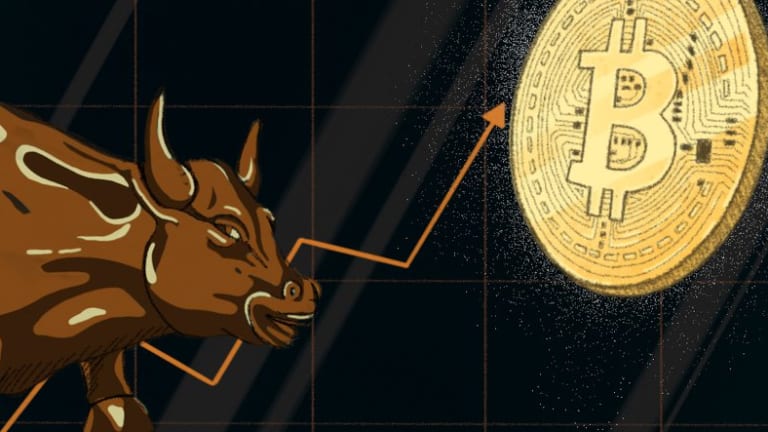Bitcoin’s True Value: Beyond Market Speculation

Bitcoin’s True Value: Beyond Market Speculation
A meteoric rise and tumultuous fall of Bitcoin has captured the imagination of investors and enthusiasts alike. Bitcoin’s narrative has shifted from its potential as a revolutionary digital currency to questions about its intrinsic worth in recent years. We’re going to dive deep into Bitcoin to figure out what it really is.
Understanding Bitcoin’s Genesis
Creating Bitcoin in 2009 under the pseudonym Satoshi Nakamoto, an unknown entity introduced it as a decentralized digital currency. One of the reasons Bitcoin is so valuable is its genesis. Blockchain, the underlying technology, promised transparency and security, challenging traditional financial institutions. But as Bitcoin’s value soared, people shifted focus from its technical roots to its value on the market.
Bitcoin as Digital Gold
In times of economic uncertainty, Bitcoin is often compared to gold—a store of value. Bitcoin advocates argue that because it’s limited to 21 million coins, it’s an effective hedge against inflation. Unlike gold in traditional portfolios, Bitcoin is treated here as a long-term investment, not just a medium for exchange.
Conversely, sceptics view Bitcoin as a speculative asset, driven more by market sentiment than intrinsic value. The volatility witnessed in Bitcoin’s price movements has fueled this perception, leading some to question its suitability as a reliable store of value.
Inherent Value vs. Market Perception
Bitcoin’s intrinsic value debate depends on separating how it’s perceived by the market from what it actually is. There’s scarcity, security, and decentralization; speculative trading, macroeconomic trends, and regulatory developments all play a part in the market dynamics.
With inherent value, Bitcoin’s real value lies in its ability to be decentralized, censorship-resistant, and fast. A lot of people like its peer-to-peer transactions, so it resonates with their financial freedom philosophy. It’s easy for Bitcoin to get sucked into speculative forces; the market often veers away from these core principles.
Market Volatility and External Factors
The volatility in Bitcoin’s price is both a testament to its speculative nature and a reflection of external influences. Regulatory developments, macroeconomic trends, and technological advancements all play a role in shaping market sentiment. The fear of regulatory crackdowns, for instance, has led to sharp declines, while positive developments, such as institutional adoption, have contributed to surges.
Institutional Adoption
In recent years, institutional interest in Bitcoin has grown significantly. Major corporations, hedge funds, and even traditional financial institutions have started to recognize Bitcoin as a legitimate asset class that increases the stability of the currency . The involvement of institutional investors brings both validation and potential stabilizing factors to the market.
The valuation landscape for Bitcoin shifts as institutions allocate a little bit of their portfolios to it. As Bitcoin’s narrative shifts from one of speculative gambling to one of institutional confidence, mainstream adoption and regulatory perspectives could get impacted.
The Technological Edge
Bitcoin has a technological edge that goes beyond market dynamics. Blockchain, the distributed ledger technology that underpins Bitcoin, ensures transactions are transparent and safe. Decentralized Bitcoin networks are resistant to censorship and fraud because they’re decentralized. These technological advantages give Bitcoin its intrinsic value, separating it from fiat money.
Navigating Regulatory Challenges
Regulatory environments still play a big part in Bitcoin’s perceived value. Governments around the world struggle to fit decentralized cryptocurrencies into their existing regulatory frameworks. Some countries embrace it; others worry about it being misused.
The real worth of Bitcoin needs to be balanced between regulations and decentralization. Bitcoin’s legitimacy can be enhanced if the regulatory environment is favorable, which can lead to its intrinsic value.
Conclusion
There’s a nuanced understanding of Bitcoin’s intrinsic value and its market dynamics to unlock its real value. Bitcoin went from being a decentralized digital currency to being a speculative asset in a matter of years. We see how Bitcoin has been progressing and how it needs to reconcile its technological promise with market realities.
Despite the fact that bitcoin’s inherent value lies in decentralization and blockchain technology, market perceptions, regulatory developments, and external factors have layered into its valuation over the years. Defining its future trajectory will require striking a balance between embracing Bitcoin’s revolutionary aspects and addressing regulator concerns.
In this exploration of “Unlocking the True Worth of Bitcoin: Exploring Its Inherent Value,” we find that the journey is ongoing—a dynamic interplay between technology, market forces, and regulatory frameworks. As we stand at the intersection of innovation and tradition, the true worth of Bitcoin emerges not only from its scarcity and security but also from its potential to redefine the very nature of currency in the digital age. The key lies in unlocking a harmonious synthesis between its inherent value and the evolving dynamics of the global financial landscape.
